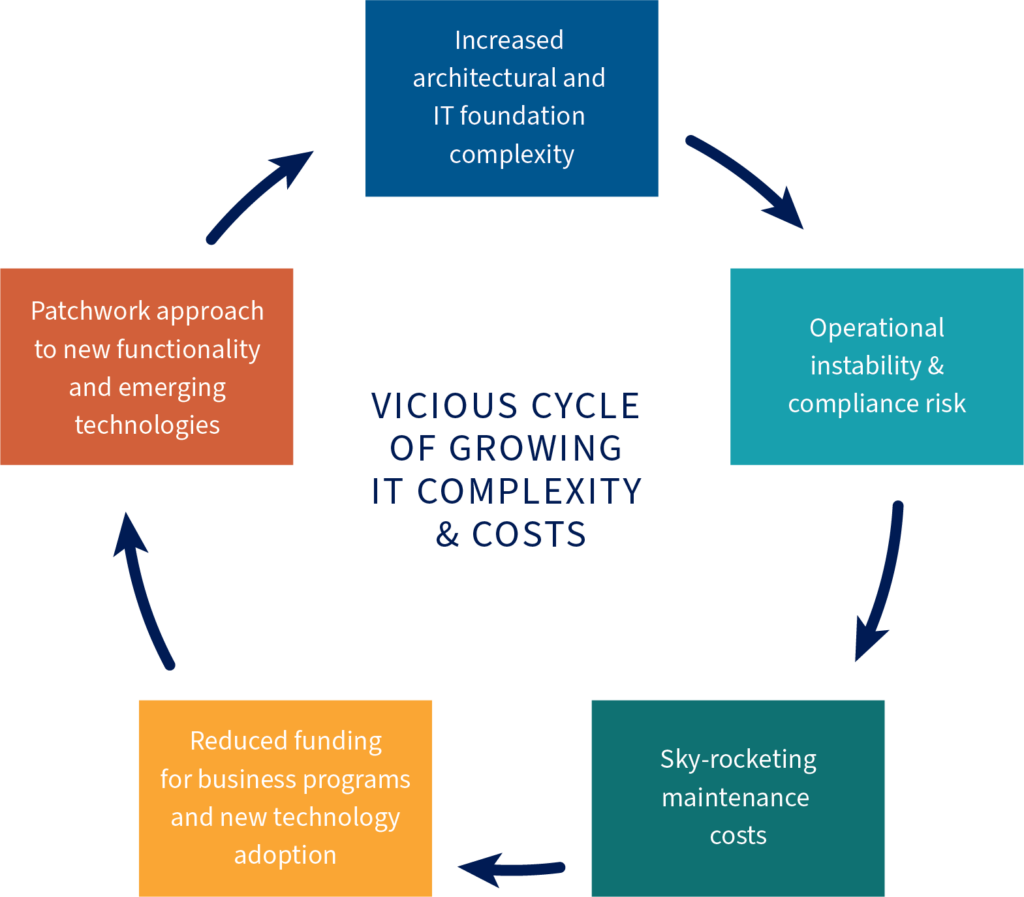Application Rationalization Approach and Key Considerations
CIOs are increasingly focused on digital transformation in response to emerging business, consumer and technology trends. For many organizations, aging, complex, and overlapping legacy application portfolios hinder transformation efforts (see Figure 1)

Application rationalization is a potential solution. On paper the steps are straightforward: inventory applications, assess application business value and technical quality, and based on this evaluation, determine which applications to eliminate, invest in, tolerate, or migrate. In practice, organizations run into decision roadblocks, funding constraints, as well as time taken away from new development.
There are three actions that CIOs can take to increase the likelihood of a successful application rationalization program:
- Use the strategic context to shape the application rationalization program approach and target results
- Adopt an approach that iteratively prioritizes high-value opportunities that align with strategic needs
- Establish an empowered program-level governance framework that links program-level governance to the overall IT governance process
Strategic Context
Application Rationalization is a potential solution but such programs can be drawn out especially when dealing with a large number of applications. The strategic context within which the program is being launched should be used to shape the program’s scope and effort, enforce program decisions, as well as determine the urgency and phasing of follow-up actions. Some of the key questions to be answered and socialized within the organization are:
- What is the driving force behind the program?
- Is there a preferred overall strategic direction for applications?
- What is the organization’s appetite for follow-up actions as determined by the rationalization process?
- Is there a business sponsor and business leadership buy-in?
- Is the business in agreement with program goals and objectives?
- What is the funding level and mechanism for the program?
Approach
The overall methodology requires iterative steps, as it is impossible to address any sizeable application portfolio is one step. Segment applications into manageable sets and develop follow-up actions by analyzing the highest potential (easiest decisions, strongest business case, etc.) options by targeting applications on the “edges”, that is, those in the areas A, B, C and D, as shown below. An iterative approach will speed up the identification of initial targets (see Figure 2).

Governance
Effective program governance requires a cross-functional team of business and IT executives that are empowered by their peers to make decisions on their behalf. Team should be tasked with making quick decisions based available information using the agreed upon decision principles.
The program governance team should further be able to enforce these decisions through existing Business-IT governance, architecture standards and project portfolio management. For example, for applications which are to be retired, the program governance team may either prioritize the retirement to happen immediately or if sequenced for a later date, they should be able to freeze any new investments into the application.
